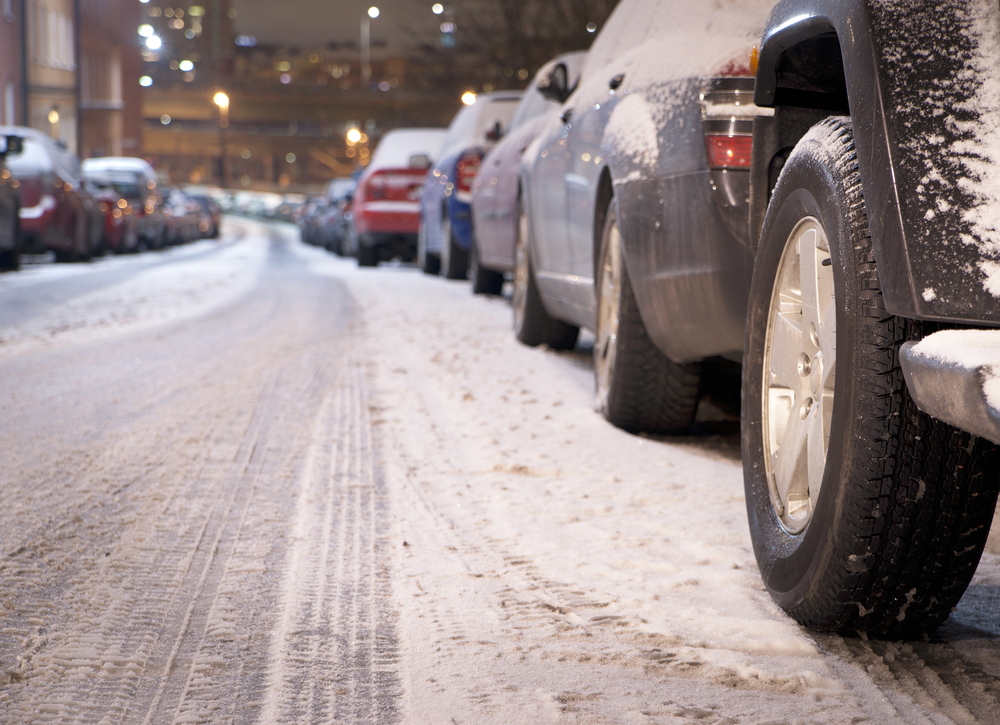
With messy winter weather forecasted this week, driving on slick roads can be hazardous. Due to this, AAA is urging motorists to take every precaution when traveling in potentially dangerous conditions.
We spoke with Ragina Cooper Averella, public and government affairs manager at AAA Mid-Atlantic to find out the safest ways to travel in this crazy Baltimore weather.
“The first rule of thumb during severe winter weather, particularly icy conditions, is not to drive unless it is absolutely necessary,” Averella says. “We are echoing the warnings of law enforcement officials in advising motorists to stay off the roads until road crews have treated the roads for ice and then not until conditions are favorable to drive.”
If you do have to drive, she says, be sure that your car is ready. This means your tires should have excellent tread and are capable of handling slick conditions. Additionally, new windshield wipers and a full wiper fluid reservoir are essential for visibility on those snowy trips. If your car is good and ready and you must hit the road, here are the best winter-driving tips.
Bridges Freeze First
“They also melt last,” Averella adds. Therefore, use extra caution because the roadway leading to a bridge may appear clear but the bridge itself may be a sheet of ice.
Accelerate and Decelerate Slowly
This is the easiest way to regain traction and avoid skidding. Accelerating slowly will increase the tire’s grip on the road. Remember, it takes longer to slow down on icy roads, so brake gently. Slamming on the brakes in snow or ice drastically increases your risk of losing control of your car. It’s also good to know what type of braking system your car has. With anti-lock brakes (ABS), the pedal should be held down—do not pump, as the system will do that for you. If your vehicle isn’t equipped with ABS, then apply the brakes firmly. If the brakes begin to lock up, slowly release the pedal until the tires are no longer skidding.
This Isn’t Talladega
Speeding on slick roads is a sure-fire way to cause an accident. Everything takes longer when driving in snow and icy conditions. Take your time. Driving at safe, slow speeds may take a little longer, but at least you will make it to your destination one piece. Also avoid using cruise control and tailgating, allowing more time to react to road conditions. This leads us to…
Allow Extra Space
According to the National Highway Transit Safety Administration (NHTSA), during normal conditions, the acceptable distance between cars is about three to four seconds. Everything takes longer when driving in the slippery weather, like stopping and turning, so this will ensure that there’s sufficient time to brake for a sudden stop. Also, be sure to drive in the clearest lane on a highway and avoid changing lanes or driving over built-up snow on the roads.
Beware of SUV Overconfidence
“Motorists should remember that cars and ice don’t mix,” Averella says. “Driving a car on cold, slippery surfaces is an extremely dangerous activity.” Having four-wheel-drive is great for winter weather because it does a good job of gaining traction on slick roads. However, once those SUVs are on the move, they face the same difficulty with stopping and maneuvering as other vehicles. They are also far more prone to tipping over, especially when traveling at higher speeds.
Distraction Free is Key
This rule applies to driving during normal conditions as well; it is important to drive with a clear and distraction free mind. “We found that looking away from the road for just two seconds doubles your risk of being in a crash,” Averella says. If you are traveling with a passenger, have your passenger pull up that Waze app or Spotify playlist. If you’re traveling alone, it can wait.
Emergency Road Kit
“It is important for motorist to be prepared in the event of an emergency,” Averella says. “We urge motorists to store a winter weather kit in their car.” Your kit should include: a blanket, flares, ice scraper, flashlight, batteries, jumper cables, paper towels, a bag of salt or cat litter, a shovel, and a fully charged cellphone.
